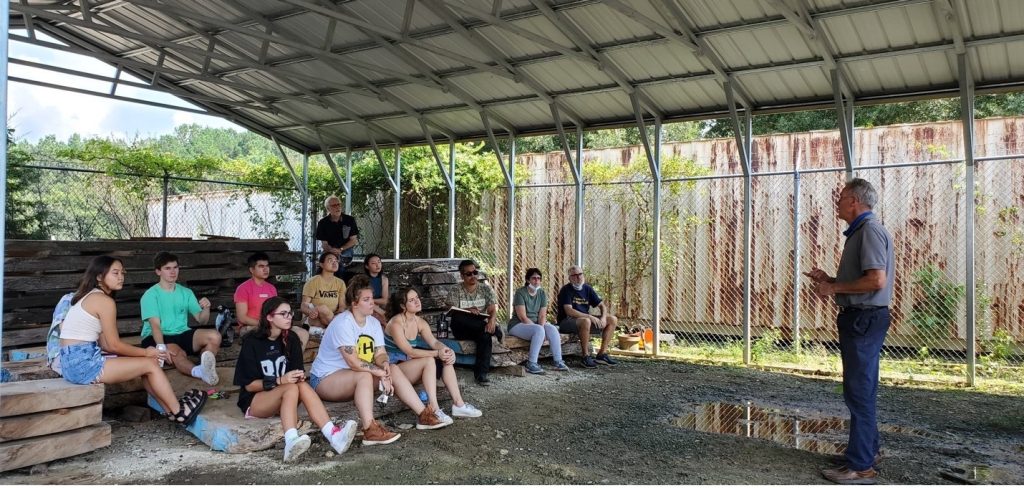UNC students turn downed trees into art
June 6, 2023
Since the fall of 2021, the Carolina Tree Heritage (CTH) and Jim Hirschfield’s wood sculpture class have given downed trees on UNC-Chapel Hill’s campus new life. CTH provides students in the introductory wood sculpting course with wood from trees that are taken down on campus, preventing the wood from ending up in landfills.
“These old big, beautiful trees have been around on campus since before there was a campus in many cases, so we’re really excited to do things with those trees when they come down,” said Susan Cohen, associate director at the UNC Institute for the Environment. Cohen and her colleague Tom Bythell, the university arborist, manage CTH.

Trees are taken down on campus for a variety of reasons, such as disease or damage from storms. In addition to providing wood for student projects, CTH transforms the wood into furniture, sculptures, or other creations and sells them, using the profits to support internships and scholarships. According to Cohen, CTH has funded two internships for UNC students so far.
Before receiving the wood, Hirschfield’s students tour the laydown yard where CTH stores its wood supply and learn about CTH’s mission of giving downed trees a new legacy. After the visit, students are given a piece of wood to create their sculptures.
Using music as inspiration for the course, Hirschfield titled the four-week-long project “Étude,” which is a musical composition focused on improving one’s technical skills.
“There’s a connection there between a project, that’s a work of art, but that is also designed to improve or basically to teach people wood processes, wood fabrication, and the tools in the shop,” Hirschfield said.
The “Étude” project enables students to utilize nearly every tool in the workshop.
Students laminate the wood provided by CTH, cutting it into thin strips and gluing the wood back together in a snaking form. Finally, students carve the wood down into a smooth wooden sculpture approximately three feet long.
According to Hirschfield, “Every wood has its own properties and enables various types of processes. Some are easier, and some are more difficult.”
As the type of wood provided by CTH changes, students learn to overcome the challenges presented by different types of wood. For example, students used wood from a diseased pecan tree taken down in front of the Carolina Inn one semester.
“Some of that disease that’s in the tree will show up and sometimes make the project a little more difficult, but that’s just a problem to work around,” Hirschfield shared.
Although the wood may present some challenges to students, Hirschfield prefers to use wood provided by CTH as it eliminates a major cost for students and has a special tie to the university, connecting students to the wood that they carve.
UNC Facilities Services converts most of the wood and trimmings from campus trees into mulch to be dispersed around campus, diverting it from the landfill. According to Cohen, CTH ensures that the oldest and most treasured of those trees from campus are used for other projects, whether as materials for student sculptures or for creating pieces of heritage furniture to sell.
Anyone interested in buying a piece from CTH can reach out to Cohen at susanac@email.unc.edu.
Story by Natalie Peoples
Natalie Peoples is a student at UNC-Chapel Hill. Natalie is a rising junior from Kensington, Maryland, pursuing a double major in journalism and environmental science. In addition to her work as a communications intern for the Institute for the Environment, she has experience in photojournalism and environmental research. Natalie plans to pursue a career in environmental journalism with a special interest in marine science.
